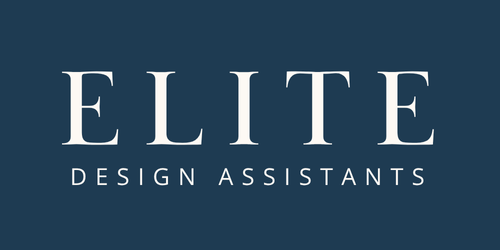Best Practices for Delegating Procurement to a Virtual Design Assistant
/For busy interior designers, delegating procurement-related tasks to a Virtual Design Assistant (VDA) can be a total game-changer. While it might feel a bit daunting to hand over certain responsibilities, it's also a huge relief to unload that mental burden. Luckily, many VDAs are seasoned pros who specialize in procurement, handling everything from purchasing to invoicing and order tracking. They've successfully managed these aspects for countless designers, so you're in good hands. With a little upfront effort to onboard your VDA and align on your processes, you'll be set for smooth sailing. Here’s your guide to the best practices for outsourcing your procurement tasks to a VDA!
Software
Even if your VDA has experience with the platforms and project management software you use, every designer operates differently.
Walk-Through: Provide detailed training on how you use your software, highlighting specific features and customizations.
Provide a Manual: Delegation becomes much more streamlined when you have a manual document you can share and that your VDA can reference anytime.
Access to Accounts & Resources
To perform their tasks effectively, your VDA needs access to various accounts and resources.
Project Management Platforms: Grant access to your project management tools.
Trade Logins: Provide logins for supplier websites and trade accounts.
Cloud Folders: Share relevant cloud folders containing project information.
Documents: Provide access to your resale certificate, COI samples, and other necessary documents.
Processes & Protocols
Set clear expectations for processes and protocols so that nothing falls through the cracks, and to avoid duplicate work.
Responsibilities: Define who is responsible for each task, such as purchasing, creating and sending invoices, and client communication.
Task Frequency: Define how often tasks like order tracking and invoicing should be performed.
Templates: Provide templates for Purchase Orders (POs), invoices, and emails.
Markup Policies: Explain your markup policies, including percentages and applicable conditions.
Tax Information: Share necessary tax-related information.
Warehouse Coordination: Outline procedures for coordinating with receiving warehouses.
Payment Processes: Detail how payments should be handled and recorded.
Delivery Notifications: Establish protocols for notifying clients or receivers about deliveries.
Damage Protocols: Set procedures for reporting and addressing damaged goods.
Communication
Establish the who’s, what’s, when’s, and how’s of correspondence with all involved parties.
In-House Communication: Use a consistent method for sharing information within your team.
Vendor Communication: Set guidelines for how to communicate with vendors.
Client Communication: Define how to handle client interactions, including preferred methods and timing.
Project Briefing
Keep your VDA in the loop about each project by providing essential details.
Client Information: Share client names and contact information.
Addresses: Provide the project’s site address and accurate shipping addresses.
Project Timeline: Outline the project timeline and key milestones.
Communication Preferences: Note any specific communication preferences for the client.
Regular Check-ins
Regular meetings are key to maintaining an effective virtual working relationship.
Weekly Meetings: Schedule at least a 15-minute check-in each week to discuss progress and address any concerns.
Feedback Loop: Encourage open feedback to continually improve processes and collaboration.
Having well-defined processes will help both you and your VDA to work much more efficiently. Getting on the same page from the start makes all the difference when passing off the baton in the procurement phase of your projects. Then, enjoy the weight off your shoulders and focus on the creative aspects of your work!
xx, Danae









